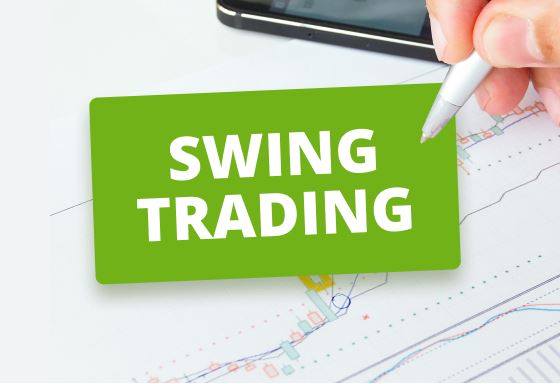Swing trading is a way to make money with any financial instrument over a few days (more than one day) to a few weeks.
Thus, swing traders mostly use four-hour (H4) and daily (D1) charts to make decisions. They may also use both fundamental analysis and technical analysis.

Which time frame is best for swing trading?
The four-hour (H4) time frame is the best for swing trading. But swing traders sometimes use charts with weekly and daily time frames in markets with low or high volatility.
The trading time frame for swing traders is based on the market’s volatility and their instrument.
Most traders who are just starting should start with swing trading. The main reason is that swing traders only make a few trades per month, unlike day traders. Overtrading can be avoided with swing trading.
The routine for swing trading should be based on analyzing basic price levels rather than trading too much.
How to choose the best chart for swing trading?
Draw trend lines on the RSI indicator to determine the best time frame for a swing trade. If the RSI is at 45 degrees, the trend is strong, and the time frame is perfect for a breakout swing trading strategy.
Most of the time, the four-hour (H4) chart is used the most, followed by the daily chart. Forex trading can be successful with other time frames, but these two are the most common.
Swing trading The Daily chart shows the best results for ETF strategies because bullish trends last longer for baskets of stocks, bonds, and commodities in an ETF.
Why does the time frame matter for swing trading?
The trading theory divides strategies into different groups based on the time frame and trading system used:
There are strategies for the day (intraday), the middle, and the long term. Investing is another word for long-term plans.
There are three ways to trade: scalping, swing trading, and position trading. Scalping is a trading strategy for day trading. Position trading, which is trading on individual solid moves in a long trend, can be done in the short and long term.

Time frames typically used in trading strategies
In the table below, you can see how trading methods depend on different time frames:
| Trading Strategy | Holding time | |
| 1 minute | Scalping, Day Trading | 1-15 minutes |
| 5 minute | Scalping, Day Trading, Fundamental analysis trading | 5-60 minutes |
| 15 minute | Day Trading, Swing Trading, Fundamental analysis trading | 60 minutes – 2 swings |
| 30 minutes | Day Trading, Swing Trading, Fundamental analysis trading | 60 minutes – few swings |
| 1 Hour | Swing Trading, Trend trading | 1 Day – Few days |
| 4 Hours | Swing Trading, Trend trading, Positional trading | 1 Few days – few weeks |
| 1 Day | Swing trading, Positional trading, Long-term investing | Few weeks – A few months |
| 1 week | Positional trading, Long-term investing, Carry Trade | Few weeks – a few years |
Bottom line
In conclusion, swing traders usually do best with H4 and daily time frames. Traders can look at the market using any mix of chart time frames. When planning trades for several days, the daily bar time frame and H4 give you more freedom and help you see the market better.


